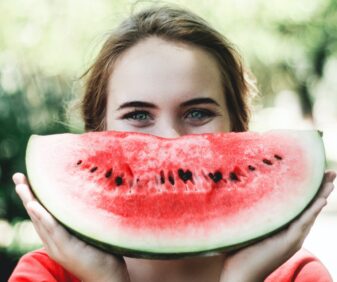


The human body is not able to produce iron – one of the most important micronutrients – on its own, which is why we must supply it with food. This element is part of the enzymes and coenzymes that are important for the production of energy and immunity and …
The human body is not able to produce iron – one of the most important micronutrients – on its own, which is why we must supply it with food. This element is part of enzymes and coenzymes that are important for the production of energy and immunity and proteins such as haemoglobin and myoglobin. It also affects cholesterol metabolism, promotes detoxification processes in the liver and takes part in DNA synthesis. The total amount of iron ranges from 3.5 g to 5 g, of which about 70% is in haemoglobin, which is responsible for the transport of oxygen from lungs to tissues. It also occurs in the liver – stored in the form of hemosiderine and ferritin, in the bone marrow (the process of creating new erythrocytes) and in the blood to which it is transported, among other things, thanks to transferrin.
Inappropriate approach to diet, genetic predisposition or diseases may cause iron deficiency and lead to a significant drop in form associated with microcytic anaemia. Fortunately, a well-thought-out choice of products in the diet can protect against iron deficiency.
WHO IS MOST AT RISK OF DEFICIENCY?
The iron deficiency problem associated with a poor diet affects up to 30% of men and 60% of women. They are in the highest risk group:
- children and young people in growth
- people with an ill-balanced diet based on highly processed products eating monotonously
- persons with frequent bleeding (as a result of injuries, operations, anticoagulants)
- patient with chronic inflammation, infections, cancers, parasitic infections
- persons with a disability of iron absorption (e.g. those who use antacids to neutralize gastric juice).
- athletes (particularly noticeable shortages, resulting in a decrease in performance)
- women, with abundant menstrual cycles and during pregnancy
- vegans, vegetarians
WHAT ARE THE CONSEQUENCES OF IRON SHORTAGES?
Microcytic anaemia (its characteristic symptoms are: general weakness, rapid fatigue during everyday activities, dyspnea, dizziness, pale skin, blue sclera), as well as, among other things Nervousness, sense of danger, brittleness and hair loss, involuntary muscle spasms, slow reactions, depression, insomnia or other sleep disorders, difficulty in swallowing, weakness of immunity, a warped appetite (so-called pica), i.e. an unusual appetite for plaster, earth etc.
THE BEST SOURCES OF IRON IN FOOD
Iron can be divided into heme (found in animal products) and non-heme (in plant products). This translates into its bioavailability – it is absorbed even 5-10 times less from plant sources. How much can we assimilate this element from our diet? From zoonotic sources about 10-20%, from plant sources 2-5%. These are the products in which we find most of it:
Offal (liver, kidneys, heart), red meat, seafood (shrimps, squids), eggs, nuts, seeds, wholemeal bread, pulses (especially soya). parsley, cocoa, dried spices (marjoram, thyme and basil).
EXAMPLES OF PRODUCTS TO REDUCE AND INCREASE ITS ABSORPTION
In the prevention of shortages of this element, it is also worth knowing what potentially facilitates or hinders its absorption in the body. Coffee, tea, chocolate, rhubarb, beetroot, botulinum, spinach, sorrel (heat treatment partially reduces the amount of oxalate in vegetables) are among the iron absorbing factors. They are mainly increased by: vitamin C (it increases the level of bioavailability of the element several times, even at low doses), starch, animal protein.
HOW MUCH EXACTLY DO WE NEED IT?
- women – about 18 mg/day (pregnant and breastfeeding women – about 27 mg/day)
- men – about 10 mg/day
- children from 6 months to 1 year old – 10 mg/day
- infants under 6 months of age – 6 mg/day
In order to determine the iron resources in the body, it is worth to make a diagnosis in this direction as well as to consult a doctor or nutritionist who will choose the right preparation and dose.












